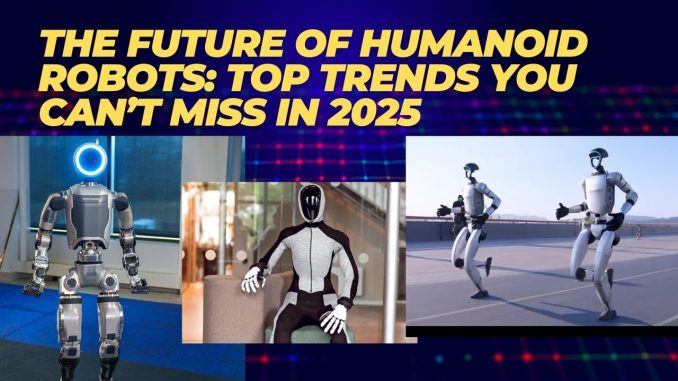
Human-robot collaboration is rapidly evolving from a futuristic concept into a practical reality that is reshaping industries and workplaces. As robots become more intelligent, adaptable, and capable of working alongside people, the nature of collaboration is shifting from simple automation to dynamic partnerships. This transformation is not about replacing humans but about augmenting human capabilities, creating environments where people and machines complement each other to achieve outcomes that neither could accomplish alone.
The future of collaboration between humans and robots will be defined by integration. Robots are no longer confined to isolated factory floors or repetitive assembly lines. They are increasingly designed to interact directly with humans in shared spaces, whether in warehouses, hospitals, offices, or even homes. This integration requires robots to be equipped with advanced sensors, machine learning algorithms, and intuitive interfaces that allow them to understand human behavior and adapt accordingly. The result is a more fluid and natural interaction, where robots can anticipate needs, respond to cues, and work seamlessly alongside people.
One of the most promising aspects of human-robot collaboration is its potential to enhance productivity without sacrificing safety. Collaborative robots, often referred to as cobots, are engineered to operate safely in close proximity to humans. They can take on physically demanding or hazardous tasks, reducing the risk of injury while freeing workers to focus on higher-value activities. This balance between efficiency and safety is critical, as it ensures that technological progress benefits both businesses and employees. In industries where precision and consistency are essential, cobots provide a reliable partner that complements human judgment and creativity.
The workplace of the future will likely see robots taking on roles that require adaptability rather than rigid programming. Advances in artificial intelligence are enabling robots to learn from experience, adjust to new environments, and collaborate in ways that feel more intuitive. For example, a robot assisting in logistics might learn to optimize routes based on real-time data, while a healthcare robot could adapt its support based on patient needs. These capabilities move robots beyond simple tools into the realm of intelligent collaborators, capable of contributing meaningfully to complex tasks.
Human-robot collaboration also has the potential to redefine job roles and career paths. As robots take on repetitive or dangerous tasks, humans can shift toward roles that emphasize creativity, problem-solving, and interpersonal skills. This transition will require businesses to invest in reskilling and training, ensuring that workers are prepared to thrive in environments where collaboration with robots is the norm. Far from eliminating jobs, this evolution can create new opportunities, as the demand for roles that manage, design, and improve human-robot systems continues to grow.
Trust will be a central factor in the success of human-robot collaboration. For people to embrace robots as partners, they must feel confident in their reliability, safety, and ethical use. Building this trust requires transparency in how robots make decisions, as well as clear communication about their capabilities and limitations. When employees understand that robots are designed to support rather than replace them, collaboration becomes more natural and effective. Trust also extends to broader societal concerns, such as data privacy and ethical programming, which will shape public acceptance of robots in everyday life.
The cultural impact of human-robot collaboration should not be underestimated. Different societies may approach collaboration with varying levels of enthusiasm or caution, influenced by cultural attitudes toward technology and automation. Businesses operating globally will need to navigate these differences, tailoring their strategies to align with local expectations. Over time, as successful collaborations demonstrate tangible benefits, cultural acceptance is likely to grow, paving the way for broader adoption across industries.
Innovation in design will play a key role in shaping the future of collaboration. Robots must be designed not only for functionality but also for usability and approachability. Interfaces that allow humans to interact with robots naturally, whether through voice, gestures, or intuitive controls, will make collaboration smoother and more effective. The more robots can adapt to human communication styles, the more they will be perceived as partners rather than machines. This human-centered design philosophy will be essential in creating environments where collaboration feels effortless.
Human-robot collaboration will also extend beyond the workplace into everyday life. From elder care to education, robots are poised to provide support in areas that require empathy, patience, and consistency. While robots may never fully replicate human emotions, they can offer companionship, assistance, and reliability that improve quality of life. In these contexts, collaboration is not about efficiency but about enhancing human well-being, demonstrating the versatility of robots as partners in diverse settings.
The economic implications of human-robot collaboration are significant. Businesses that adopt collaborative technologies can gain a competitive edge through improved efficiency, reduced costs, and enhanced innovation. At the same time, economies will need to adapt to shifts in labor markets, ensuring that workers are supported through transitions. Governments, educational institutions, and businesses will play a critical role in shaping policies and programs that maximize the benefits of collaboration while addressing potential challenges.
Looking ahead, the future of human-robot collaboration will be shaped by continuous innovation and adaptation. As technology advances, robots will become more capable, more intuitive, and more integrated into human environments. The boundaries between human and machine roles will blur, creating partnerships that leverage the strengths of both. Success will depend not only on technological progress but also on the willingness of businesses and individuals to embrace collaboration as a path to growth and resilience.
Ultimately, human-robot collaboration represents a new chapter in the relationship between people and technology. It is a shift from viewing machines as tools to recognizing them as partners, capable of working alongside humans to achieve shared goals. By focusing on trust, design, adaptability, and cultural acceptance, businesses can unlock the full potential of collaboration. The future will not be defined by robots replacing humans, but by humans and robots working together to create possibilities that neither could achieve alone.